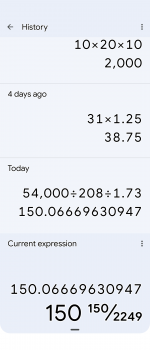Hi,
I have a question regarding how you calculate amps per phase, and what it actually means. I am looking at a spec sheet for a piece of equipment that has a load of 54kW and on the sheet is says 150 amps per phase, the equipment is 3-phase 208V.
My initial impression is that this sounds like 150Ampsx3phases=450 Amps for the entire equipment, but I know that is likely not the case, as that would be extremely high load for a water heater. I am asking so that I can correctly size the breaker, but want to understand how this amps per phase calculation works and how it is used for sizing.
It makes sense to me where the 150 comes from, 54,000W/3 = 18,000 W 18,000W/120V = 150 A but you would not multiply this by 3 right? Why?
I have a question regarding how you calculate amps per phase, and what it actually means. I am looking at a spec sheet for a piece of equipment that has a load of 54kW and on the sheet is says 150 amps per phase, the equipment is 3-phase 208V.
My initial impression is that this sounds like 150Ampsx3phases=450 Amps for the entire equipment, but I know that is likely not the case, as that would be extremely high load for a water heater. I am asking so that I can correctly size the breaker, but want to understand how this amps per phase calculation works and how it is used for sizing.
It makes sense to me where the 150 comes from, 54,000W/3 = 18,000 W 18,000W/120V = 150 A but you would not multiply this by 3 right? Why?


